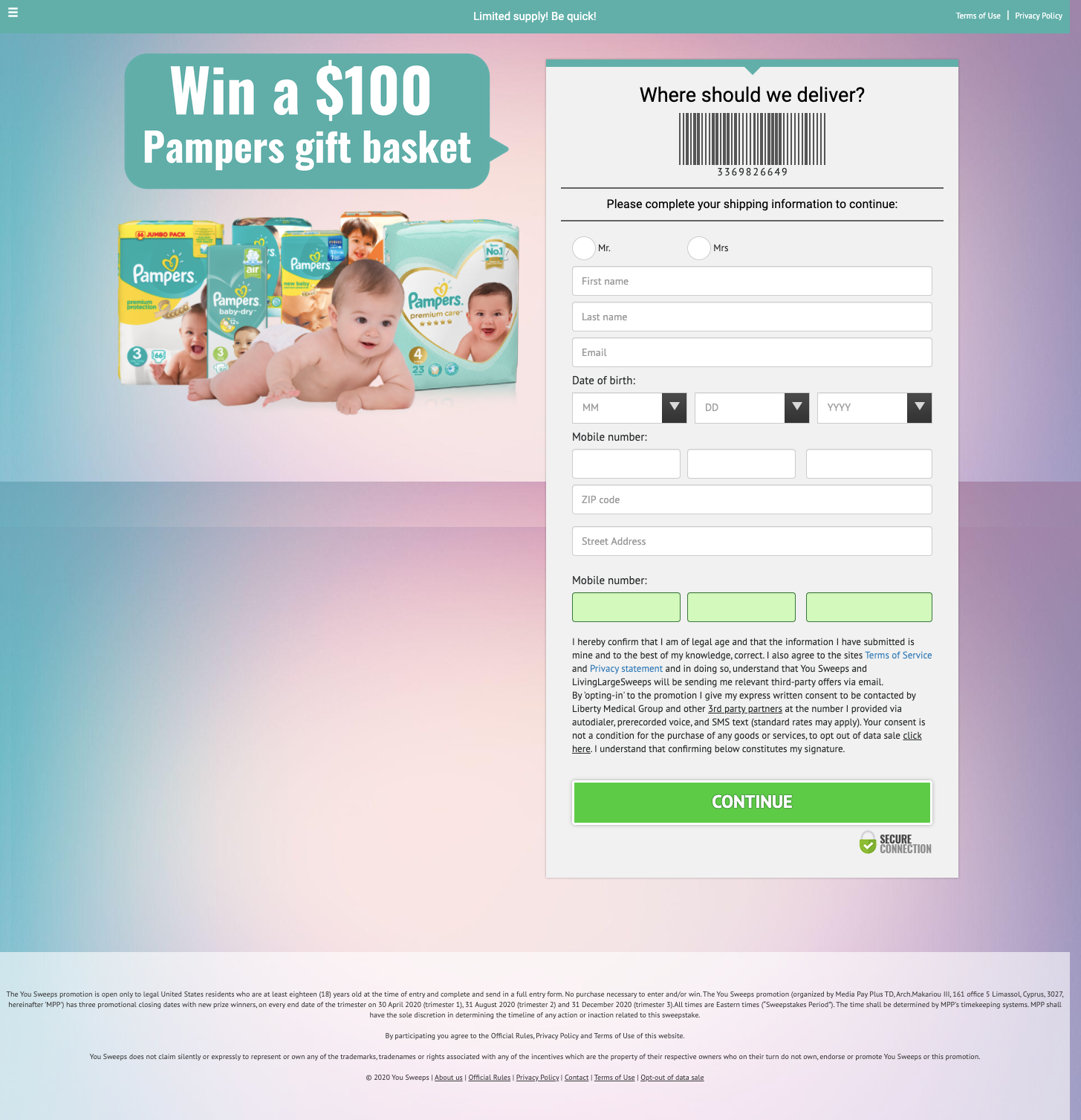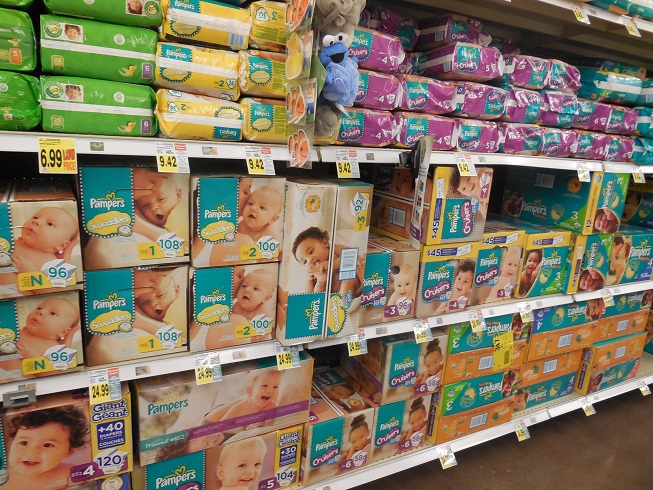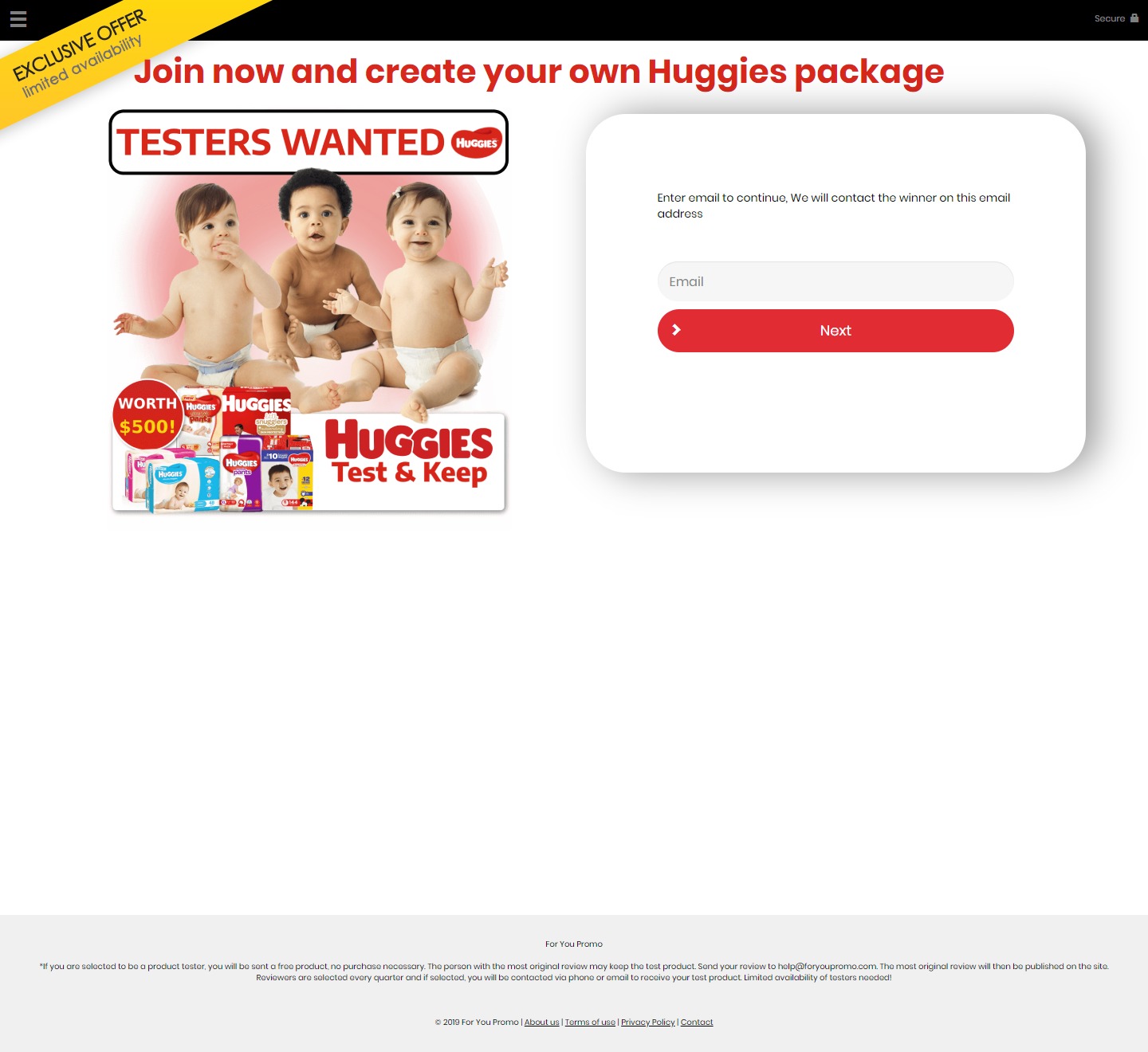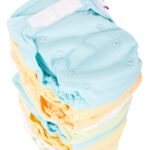Huggies vs. Pampers The Ultimate Eco-Friendly Diaper Showdown
“File:Baby Lotions, Soaps, and Diaper …” from commons.wikimedia.org and used with no modifications.
When you’re a new parent, the mountain of choices you need to make for your little one can feel overwhelming. Diapers are no exception, especially when you’re trying to do what’s best for your baby and the planet. Let’s dive into the world of eco-friendly diapers and compare two of the biggest names in the game: Huggies and Pampers.
First things first, let’s get a quick overview of what we’ll cover:
Key Takeaways
-
Understand the importance of eco-friendly diapers for your baby and the environment.
-
Learn about the sustainable practices of Huggies and Pampers.
-
Discover the differences in materials, biodegradability, and brand initiatives.
-
Compare the performance, comfort, and cost of Huggies and Pampers eco-friendly diapers.
-
Find out where you can buy these diapers and how to make the most eco-conscious choice.
What Makes a Diaper Eco-Friendly?
Before we pit Huggies against Pampers, let’s understand what “eco-friendly” means in the context of diapers. It’s all about the materials they’re made from, how they’re produced, and their impact on the environment after they’re used. We’re talking renewable resources, fewer chemicals, and better biodegradability. Now, let’s see how Huggies and Pampers stack up.
Sustainable Materials and Production Processes
Both Huggies and Pampers have stepped up their game with lines like Huggies Special Delivery and Pampers Pure Protection. These products boast plant-based materials and avoid nasties like chlorine bleaching and fragrances. But it’s not just about what’s in the diapers; it’s also about how they’re made. We’re looking for water conservation, renewable energy use, and responsible sourcing.
Biodegradability and Compostability
Traditional diapers can take hundreds of years to break down in landfills. That’s a big no-no for the environment. Eco-friendly diapers should be more biodegradable, meaning they break down faster and easier. Some can even be composted, but there’s a catch: you’ll need to find a commercial composting facility that accepts diapers, as your backyard compost bin won’t cut it.
Brand Initiatives for Environmental Impact
It’s not just about the product; it’s also about the company behind it. Are they using renewable energy at their factories? Do they have recycling programs? Both Huggies and Pampers are making strides here, with Huggies offering a diaper and wipe recycling program and Pampers working to reduce their carbon footprint.
Getting to Know Huggies’ Eco-Friendly Side
Huggies may be known for their snug fit and leak protection, but did you know they’re also making waves in the eco-friendly space? Their Special Delivery diapers are their softest, plant-based diaper available, and they’re doing more behind the scenes to be gentle on the planet.
Special Delivery Line: Ingredients and Certifications
Huggies Special Delivery diapers boast a host of eco-friendly features. They’re made with 20% plant-based materials and are free from parabens, fragrance, and elemental chlorine. Plus, they’re hypoallergenic and dermatologist-tested, so you can trust them with your baby’s delicate skin.
Huggies Wipes & Diapers Recycling Program
Now, let’s talk about what happens after the diaper duty is done. Huggies has partnered with TerraCycle to create a recycling program for their diapers and wipes. It’s a step in the right direction, although you’ll need to drop off your used products at a participating location.
Next Steps in Huggies’ Eco Journey
It’s clear that Huggies is on a journey to improve their environmental impact. They’re exploring more sustainable materials and production methods, and they’re engaging with parents to educate them on eco-friendly practices. Keep an eye on Huggies; they’re not done yet.
Alright, that’s part one of our eco-friendly diaper showdown. Stay tuned for the next section where we’ll dive into Pampers’ green practices and see how they compare to Huggies. Remember, every little choice you make can have a big impact on your baby’s future and the world they’ll grow up in.
Special Delivery Line: Ingredients and Certifications
When you’re picking out diapers, the fine print matters. Huggies Special Delivery diapers are not only soft and absorbent, but they’re also made with responsibly sourced materials. The fluff used in these diapers comes from certified forests, and they’ve got the green thumbs-up with the Forest Stewardship Council (FSC) certification. This means you’re not just keeping your baby dry; you’re helping protect the world’s forests too.
Huggies Wipes & Diapers Recycling Program
After the diaper change, don’t just toss it in the trash. Huggies encourages you to think green with their recycling program. It’s a simple yet effective way to reduce your environmental footprint. You collect your used diapers and wipes, drop them off, and TerraCycle takes care of the rest. It’s a small step that can lead to big changes, and it’s a move that shows Huggies is serious about sustainability.
Next Steps in Huggies’ Eco Journey
What’s next for Huggies? They’re not resting on their laurels. They’re committed to improving the sustainability of their products and operations. Expect to see more innovations in materials, more efficient manufacturing processes, and even more ways to recycle. Huggies knows that the journey to a greener planet is ongoing, and they’re geared up for the ride.
Pampers’ Pursuit of Sustainability
Not to be outdone, Pampers is also on a mission to make diapering more eco-friendly. They’re tackling the challenge from all angles, with a focus on materials, production, and even packaging. Let’s see how Pampers is stepping up to the plate in the sustainability game.
Pampers Pure Protection: Eco-Friendly Attributes
Pampers Pure Protection diapers are like a breath of fresh air for eco-conscious parents. They’re crafted with premium cotton and soft, plant-based fibers that are gentle on your baby’s skin and kinder to the planet. Free of chlorine bleaching, fragrance, and parabens, these diapers show that Pampers is serious about combining performance with environmental responsibility.
 Carbon Footprint Reduction Efforts
Carbon Footprint Reduction Efforts
Reducing a carbon footprint is no small feat, but Pampers is committed to making it happen. They’re investing in renewable energy sources and optimizing their production lines to cut down on emissions. By scrutinizing every step of their supply chain, Pampers is working towards a future where every diaper change contributes to a cleaner, greener world.
Sustainable Innovations on the Horizon
What’s on the horizon for Pampers? They’re not just looking at what they can do today; they’re planning for tomorrow. Expect to see new materials that push the boundaries of what’s possible for eco-friendly diapers, more efficient packaging solutions, and initiatives that empower parents to make sustainable choices. Pampers knows that innovation is key to a sustainable future, and they’re not slowing down.
There you have it, a closer look at how Huggies and Pampers are vying for the title of the most eco-friendly diaper on the market. Both brands are making strides, but there’s always more work to be done. As parents, your choice can drive the change towards a greener future for the little ones we love so much.
Comparative Analysis: Performance and Comfort
When it comes to diapers, two things matter most: how well they absorb and how comfortable they are for your little one. No parent wants to deal with leaks and no baby wants a diaper that feels like sandpaper. So, how do Huggies and Pampers eco-friendly options measure up in these crucial areas?
Absorbency Face-Off: Huggies vs. Pampers
Let’s cut to the chase – both Huggies Special Delivery and Pampers Pure Protection are designed to be highly absorbent. But the true test of a diaper’s mettle is an overnight sleep or a long car ride. Parents report that both brands hold up well, but some give the edge to Huggies for keeping their babies dry through the night. Remember, though, every baby is different, so what works for one may not work for another.
Comfort Design: Baby’s Skin Meets Eco-Friendly Materials
Your baby’s comfort is non-negotiable. Huggies and Pampers both understand this, which is why their eco-friendly lines are made with soft, gentle materials. Parents rave about the softness of Pampers Pure, often comparing it to cloth diapers, while Huggies Special Delivery gets props for its snug fit that moves with the baby. It’s a close call, but the best diaper is the one that fits your baby just right.
Real-World Leak Protection: Parental Feedback
We’ve all been there – that moment when you pick up your baby and feel that dreaded dampness. Leak protection is a deal-breaker for many parents. In the battle between Huggies and Pampers, it’s a bit of a toss-up. Some parents swear by Pampers’ ability to contain the messiest of situations, while others find Huggies to be the fortress their baby needs. The consensus? Try both and see which one keeps your baby and your nursery dry.
Cost Considerations and Value
Diapers are a significant expense in a baby’s first few years, so the cost is a big factor for many families. When you’re looking at eco-friendly diapers, you’re often looking at a higher price tag. But is it worth it? Let’s break down the costs.
Eco-Friendly Diaper Pricing: A Detailed Overview
Eco-friendly diapers are generally more expensive than their traditional counterparts, but for a good reason. The materials and manufacturing processes that reduce environmental impact also add to the cost. Huggies Special Delivery and Pampers Pure Protection are competitively priced with each other, though prices can vary based on where you shop and the size of the diaper. It’s worth noting that buying in bulk or subscribing to a delivery service can bring down the cost per diaper.
Assessing Long-Term Savings and Eco Benefits
While the upfront cost of eco-friendly diapers might be higher, there are other savings to consider. A diaper that’s better for the environment can mean less waste, which can translate to cost savings for municipal waste management – savings that can trickle down to taxpayers. Plus, choosing a diaper that’s better for the environment is an investment in your child’s future. It’s about looking beyond the price tag to the bigger picture of a sustainable planet.
In the end, the choice between Huggies and Pampers eco-friendly diapers may come down to personal preference. But rest assured, both brands are making efforts to offer products that are kinder to your baby’s skin and the environment. As a parent, you have the power to choose the diaper that aligns with your values and meets your baby’s needs. And remember, every small step towards sustainability is a leap towards a healthier planet for all our children.
Availability and Accessibility for Eco-Conscious Parents
So, you’re ready to make the switch to eco-friendly diapers. Great! But where can you find them? Thankfully, both Huggies and Pampers have made their green diapers widely available. It’s all about knowing where to look.
Global Market Reach and Retail Availability
Whether you’re in a bustling city or a quiet suburb, chances are you won’t have to go far to find Huggies Special Delivery or Pampers Pure Protection. These eco-friendly options are stocked in major retail stores across the globe. From your local supermarket to the big box stores, you’re likely to find these diapers sitting on the shelves, waiting to go home with you.
Online Shopping and Subscription Services
In the digital age, convenience is king. Online retailers have made it easier than ever to get eco-friendly diapers delivered right to your door. Subscription services are a busy parent’s best friend, offering regular deliveries and often discounts. Plus, you can manage your orders from the comfort of your couch—because let’s face it, when you’ve got a baby, every second of downtime is precious.
Educating Parents: Making a Difference with Every Diaper Change
Choosing eco-friendly diapers isn’t just a personal choice; it’s a chance to educate and inspire others. Each diaper change is an opportunity to do good for the environment and to spread the word about the importance of sustainable living.
The Importance of Eco-Friendly Diapering
It’s not just about what’s best for your baby’s bottom; it’s also about what’s best for the world they’ll inherit. Eco-friendly diapers reduce the use of non-renewable resources, minimize exposure to chemicals, and decrease landfill waste. By choosing green diapers, you’re setting an example and teaching your child about the values of caring for the planet from day one.
Campaigns and Outreach for Environmental Awareness
Both Huggies and Pampers are doing their part to raise environmental awareness through various campaigns and educational efforts. They’re reaching out to parents with resources and information, helping to create a community of eco-conscious families. By joining in these initiatives, you can stay informed, get involved, and help drive change for a greener future.
 FAQ
FAQ
Got questions? You’re not alone. Here are some of the most common queries parents have when it comes to eco-friendly diapers:
What are the main differences between Huggies and Pampers eco-friendly diapers?
The main differences lie in the materials, certifications, and specific environmental initiatives of each brand. Huggies focuses on plant-based materials and recycling programs, while Pampers emphasizes their premium cotton and efforts to reduce their carbon footprint.
How do cost differences impact the choice between eco-friendly Huggies and Pampers?
While both brands are priced similarly, the cost can be a factor for many families. Remember to consider long-term savings and environmental benefits when making your decision. Look out for bulk deals or subscription services to save some cash.
Can eco-friendly diapers really make a significant environmental impact?
Yes, they can! By choosing diapers that are more biodegradable and made from sustainable materials, you’re reducing the environmental impact of one of the most common baby products. Every little bit helps, and it all adds up to a big difference.
Are eco-friendly diaper materials as effective as traditional ones?
Many parents find that eco-friendly diapers are just as effective, if not more so, than traditional diapers. They offer excellent absorbency and comfort, all while being kinder to the environment. It’s a win-win!
There you have it, folks—the ultimate eco-friendly diaper showdown between Huggies and Pampers. As you navigate the world of parenting, remember that your choices have power. Whether you go for Huggies Special Delivery or Pampers Pure Protection, you’re making a positive impact with every diaper you change. Happy diapering!
What are the main differences between Huggies and Pampers eco-friendly diapers?
When you’re standing in the diaper aisle, you might wonder what sets Huggies and Pampers apart in the eco-friendly arena. Huggies’ Special Delivery diapers focus on using plant-based materials and offer a recycling program through TerraCycle. Pampers Pure Protection, on the other hand, prides itself on using premium cotton and soft plant-based fibers, and they’re working hard to reduce their carbon footprint. The choice might come down to whether you prioritize a recycling program or a company’s broader environmental efforts.
How do cost differences impact the choice between eco-friendly Huggies and Pampers?
Let’s talk money. Both Huggies and Pampers eco-friendly diapers are priced at a premium compared to regular diapers, but they’re pretty neck-and-neck with each other. Your decision might come down to which brand offers more value through bulk purchases or subscription discounts. Remember, investing in eco-friendly diapers isn’t just a purchase; it’s a statement about the kind of world you want your child to grow up in.




